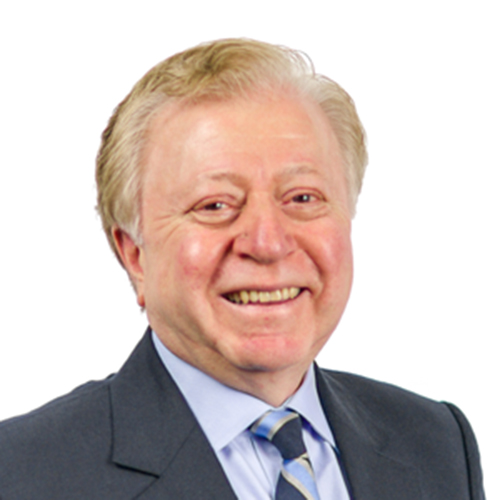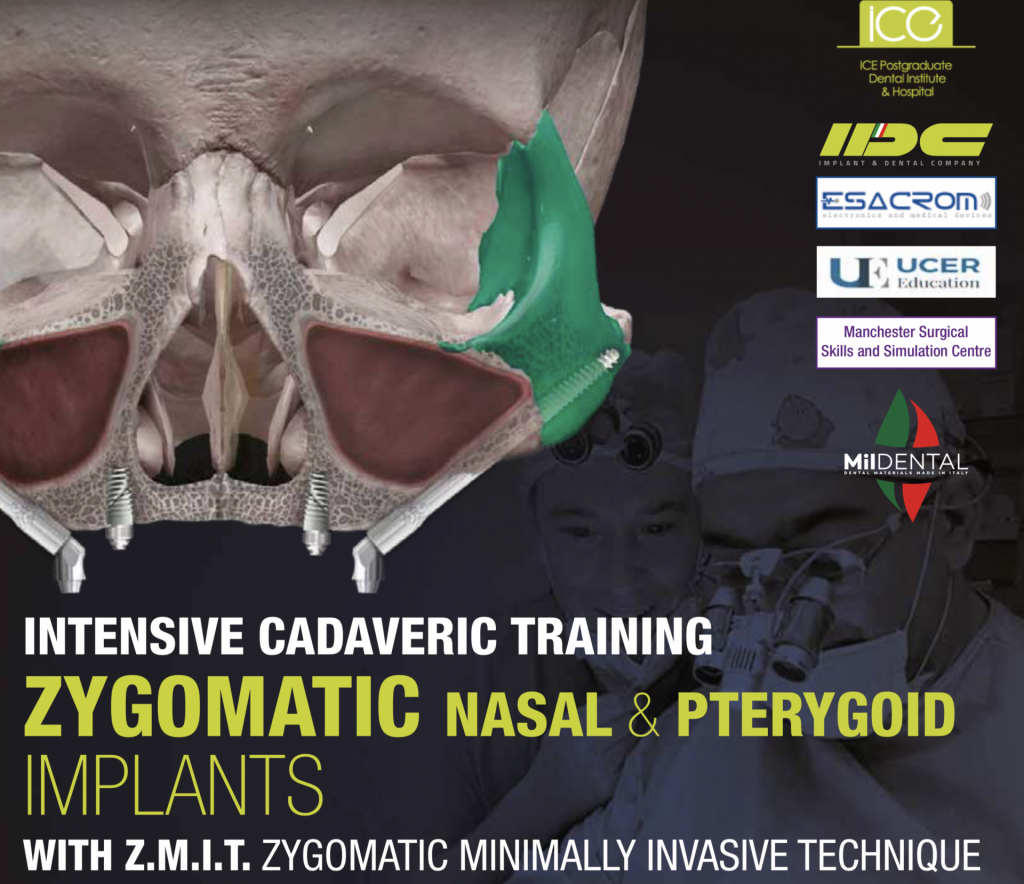Zygomatic and Pterygoid Implant Masterclass
Featured Products Promotional FeaturesPosted by: Dental Design 5th February 2020

The quantity and quality of bone is a major factor in a patient’s viability for dental implants and the long-term success of the procedure. Where bone is inadequate complications are more likely to occur, and implant stability is less likely to be achieved and maintained.[i]
Advanced bone resorption initiated by tooth loss can leave patients with reduced bone volume and mass. The human body has evolved to be very conservative with bone density, maintaining only what conditions demand. Perhaps the best example of this, and one that may be helpful for patients, is that of astronauts. Astronauts are required to be exceptionally fit and capable individuals, yet after only short-term exposure to microgravity their bone density invariably reduces at an alarming rate of 1-1.5% per month.[ii] The same use it or lose it principal applies, on a smaller scale, to edentulous and partially edentulous patients. Once a tooth is extracted or lost, the supporting bone thins and weakens, regrowth going unstimulated by the lack of a load and corresponding strain.[iii] Following posterior tooth extraction, maxillary sinus pneumatisation can also occur, resulting in a reduction of the thickness of the sinus floor. This effect is usually greatest in instances where the second molar is lost, and where more than one tooth in the same area is removed (particularly if adjacent). Reduction in bone volume driven by sinus pneumatisation generally occurs within 4 to 6 months of extraction, and is minimal or ceases once mature bone fills the empty socket.[iv] Substantial bone loss is also increasingly observed in patients presenting with failed/failing dental implants due to peri-implantitis. These processes can leave patients with insufficient bone to reliably support an implant.
For patients with severely atrophied jaw bone receiving implants, bone grafts are often employed. Bone grafting is a complex procedure and can pose numerous complications, both at the donor and recipient sites. The most common complications are inflammation/infection and implant exposure.[v] Bone graft material does not have to come from the patient themselves as various alternatives can be used, but autologous bone is considered the gold-standard. Bone grafting is expensive as it requires more resources such as daycare anaesthesia. It increases the overall duration of the treatment by several months requiring one or two additional surgical stages.
While bone grafting procedures can be the right choice for certain patients, others may benefit more from zygomatic implants. Zygomatic implants effectively bypass the need for thick, high-quality bone in the maxilla by using longer implant that embeds in the dense zygomatic bone. While the implant may appear intimidatingly large compared to conventional dental implants, the procedure has had excellent results with a reported success rate of 97%.[vi] For suitable patients, the procedure can be a great alternative to bone grafts, as it requires fewer procedures, less healing time and is well suited to immediate loading.[vii] Additionally, many patients are apprehensive about bone grafts, particularly xenografts, as a treatment option and may reject procedures involving grafts on religious or ethical grounds.[viii]
If you are interested in offering your patients zygomatic implants, or further reducing the invasiveness of the procedure, you should definitely consider attending the upcoming two-day zygomatic implant training course – running April 30th and May 1st. Lead by Professor Andrea Tedesco and Professor Cemal Ucer, the course will afford attendees the opportunity to learn the Zygomatic Minimally Invasive Technique (Z.M.I.T.), recently unveiled at the 2019 International Zygomatic Congress in London by Professor Tedesco.

Z.M.I.T. utilises piezoelectric instruments, which provide an added layer of safety to the procedure. Piezoelectric instruments will not cut soft tissue without significant force being exerted, preventing collateral damage to the many blood vessels, nerves and the vital structures, including the orbit, that occupy the region.[ix] For cutting bone the technology presents significant advantages over conventional handpieces, including increased precision, improved handling, reduced bleeding (resulting in better visibility of the site). minimal physical trauma and reduced thermal damage to bone tissue.[x] Those attending the course will take part in a hands-on workshop that will include anatomical dissection on a cadaver with zygomatic, nasal and pterygoid implants, using the most minimally invasive technique possible. This is an excellent opportunity to get to grips with cutting-edge piezo surgery, and safely learning how to fully utilise the technology.
Grafts are still called for in some circumstances and maxillary sinus grafting will be discussed at the event, as well as other techniques including 3D-printed, custom designed subperiosteal implants.
This course is an excellent opportunity to get invaluable hands-on surgical training and experience, as well as pick the brains of some of the most accomplished minds working in this field.
Patients in need of dental rehabilitation vary considerably, there is no one solution that is ideal across every case. It is said that when all you have is a hammer, every problem looks like a nail. By becoming well-versed in alternative methodologies, you can find the optimal treatment for any given patient. Zygomatic implants are not the solution to every case, but they can be life changing for the right patient.
Professor Ucer’s private clinic – the Centre for Oral-Maxillofacial Dental Implant Reconstruction located at Manchester ICE Postgraduate Dental Institute and Hospital – offers a comprehensive range of treatment for severely atrophic jaws. The treatment options include major pre-prosthetic and maxillary sinus grafting, graft-less immediate loading using zygomatic and pterygoid implants and 3D printed individualised subperiosteal implants. For enquiries or private referrals, please contact Mel Hay below.
Please contact Professor Ucer at ice@ucer.uk or Mel Hay at mel@mdic.co
01612 371842 / www.ucer.education
[i] Chrcanovic B., Albrektsson T., Wennerberg A. Bone quality and quantity and dental implant failure: a systematic review and meta-analysis. The International Journal of Prosthodontics. 2017; 30(3): 219-237. https://www.ncbi.nlm.nih.gov/pubmed/28319206 January 10, 2020.
[ii] Sibonga J., Evans H., Smith S., Spector E., Yardley G. Risk of bone fracture due to spaceflight-induced changes to bone. NASA. 2017. https://ntrs.nasa.gov/archive/nasa/casi.ntrs.nasa.gov/20170004597.pdf January 10, 2020.
[iii] Hansson S., Halldin A. Alveolar ridge resorption after tooth extraction: a consequence of a fundamental principle of bone physiology. Journal of Dental Biomechanics. 2012; 3: 1758736012456543. https://www.ncbi.nlm.nih.gov/pmc/articles/PMC3425398/ January 10, 2020.
[iv] Sharan A., Madjar D. Maxillary sinus pneumatization following extractions: a radiographic study. International Journal of Oral & Maxillofacial Implants. 2008; 23(1): 48-56. https://www.ncbi.nlm.nih.gov/pubmed/18416412 January 10, 2020.
[v] Schwartz-Arad D., Ofec R., Eliyahu G., Ruban A., Sterer N. Long term follow-up of dental implants placed in autologous onlay bone graft. Clinical Implant Dentistry and Related Research. 2014; 18(3): 449-461. https://www.ncbi.nlm.nih.gov/pubmed/25535883 January 10, 2020.
[vi] Vélez A., Torres Á., Ortiz-Orrego G., Álvarez L. Zygomatic implants in patients with maxillary edentulism and severe bone resorption. CES Dentistry. 2016; 29(2): 40-51. http://ref.scielo.org/nkt32m January 10, 2020.
[vii] Tuminelli F., Walter L., Neugarten J., Bedrossian E. Immediate loading of zygomatic implants: a systematic review of implant survival, prosthesis survival and potential complications. European Journal of Oral Implantology. 2017; 10(Suppl. 1): 79-87. https://www.ncbi.nlm.nih.gov/pubmed/28944370 January 10, 2020.
[viii] Bucchi C., del Fabbro M., Arias A., Fuentes R., Mendes J., Ordonneau M., Orti V., Manzanares-Céspedes M. Multicenter study of patients’ preferences and concerns regarding the origin of bone grafts utilized in dentistry. Patient Preference and Adherence. 2019; 13: 179-185. https://www.ncbi.nlm.nih.gov/pmc/articles/PMC6342143/ January 10, 2020.
[ix] Barone A., Marconcini S., Giacomelli L., Rispoli L., Calvo J., Covani U. A randomized clinical evaluation of ultrasound bone surgery versus traditional rotary instruments in lower third molar extraction. Journal of Oral Maxillofacial Surgery. 2010; 68: 330-336. https://doi.org/10.1016/j.joms.2009.03.053 January 10, 2020.
[x] Hennet P. Piezoelectric bone surgery: a review of the literature and potential applications in veterinary oromaxillofacial surgery. Frontiers in Veterinary Science. 2015; 2: 8. https://www.ncbi.nlm.nih.gov/pmc/articles/PMC4672167/ January 10, 2020.









